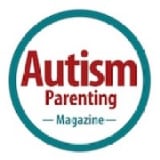This informal CPD article, 'Tips for Introducing Yourself to a Child with Autism', was provided by Autism Parenting Magazine, an organisation who have dedicated all their time and energy to releasing insightful digital magazines every month that help families across the globe navigate the challenges of the Autism Spectrum.
Meeting a child with autism for the first time can be a unique and enlightening experience. Each child has their own distinct preferences and challenges. Understanding this and approaching them with care and patience can make all the difference. We'll explore practical ways to introduce yourself to a child with autism so that your first interaction is positive and memorable.
Why are introductions hard for autistic children?
Children with autism often experience the world differently. They may have challenges with social skills and find certain social cues confusing. Sensory sensitivities can make new environments overwhelming, and they might struggle with emotional regulation. Understanding these facets can help you tailor your approach effectively.
Things to pay attention to when introducing yourself to an autistic child
When meeting a child
with autism for the first time, it’s crucial to approach the interaction with
mindfulness and empathy. Understanding the unique ways autistic children
perceive and interact with the world can greatly enhance the quality of your introduction.
Here are some key aspects to consider that can help you make a thoughtful and effective connection.
1. Timing matters
Choosing
the right moment to introduce yourself to a child with autism is
paramount.
Careful observation of the child to determine when they are most relaxed is crucial. This could be during an activity they enjoy or within a well-known environment. This strategic timing ensures that the child is at ease, significantly enhancing their openness to meeting new people.
It's essential to understand their daily schedule and aim for a time when disruptions are minimized. Sudden changes can be particularly unsettling for autistic children. The objective is to integrate the introduction seamlessly into their routine, ensuring it feels like a natural part of their day rather than an intrusion. For example, as a new teacher's aide, you observe an autistic student completing his favourite puzzle. Instead of interrupting, you wait. After he finishes, you introduce yourself, mentioning your own interest in puzzles. He doesn't respond immediately but later shows you his preferred puzzles, engaging with you at his own pace.
2. Setting the scene
The
environment where the introduction takes place can greatly influence how
comfortably a child with autism can engage. Choose a space that is quiet
and devoid of overwhelming stimuli that could cause sensory overload. These
include loud noises, harsh lighting, or crowded areas. A tranquil,
well-lit room with few distractions lets the child concentrate better on the
interaction. Ideally, this space should also feel secure and inviting,
perhaps enhanced with elements the child finds comforting, like favourite colours
or familiar decorative themes.
These considerations help create a supportive setting that encourages easier communication. For example, before meeting an autistic child for their first art class, you arrange a quiet space in the library with soft lighting and their favourite colour on the walls.
This thoughtful setup helps them feel more at ease, allowing for a smoother introduction.
3. Including familiar faces
The
presence of a familiar and trusted individual can significantly ease the
introduction process for a child with autism. This could be a family
member, a beloved educator, or a close friend with whom the child feels
safe. Their presence can be comforting and provide reassurance during the
introduction.
It's beneficial to discuss with this trusted individual the most effective ways to support the child through this new interaction. Make sure they play an active role in making the introduction as smooth and reassuring as possible.
4. Using simple and clear language
Clear
communication is key when meeting a child with autism. It’s important to use
straightforward, unambiguous language and to speak slowly and distinctly,
allowing the child ample time to process what is being said. Avoid using
figurative language like idioms or metaphors, which can be confusing. Make
sure to restate important points to ensure understanding and clarify any
miscommunications as soon as they arise.
This methodical approach in communication helps in building a clear understanding between you and the child, laying the foundation for a positive relationship.
5. Avoiding questions
Questions,
while a common part of initial interactions, can be particularly challenging
for children with autism, especially if they are complex or keep coming
quickly. To reduce potential stress, opt for making observational
statements that invite participation without the direct pressure of
questioning. For example, rather than asking, "What’s your favourite
animal?" you might comment, "I really like dogs because they're so
friendly."
This strategy encourages the child to engage in the conversation at their own comfort level and can lead to more natural and less pressured exchanges.
6. Using their special interests and shared activities
Connecting
over a child’s special interests can be an effective way to build a
conversation. Whether it’s a hobby, a particular type of music, or a favourite
subject like astronomy, initiating dialogue or activities around these passions
can make the interaction more enjoyable and meaningful for the child. For
example, if a child is fascinated by trains, discussing various train models or
drawing trains together can serve as a great icebreaker.
This approach not only keeps the child engaged but also shows your genuine interest in their preferences and world.
7. Being patient
Patience
is essential in interactions with a child with autism. They may require
more time to interpret social cues and express themselves than other
children. It’s important to give them space and time to respond without
feeling rushed or pressured. This considerate approach respects their
processing speed and helps build trust and comfort.
Recognize small gestures and responses as significant progress. These are important steps in developing communication and should be celebrated. Your patience and understanding can greatly influence the depth and quality of your interaction with the child.
Patience and empathy go a long way
Introducing
yourself to a child with autism can be a profound experience. By employing
patience, understanding, and empathy, you create an environment where
meaningful connections can flourish. Remember, each child is unique, and taking
the time to understand their world can enrich both of your lives.
We hope this article was helpful. For more information from Autism Parenting Magazine, please visit their CPD Member Directory page. Alternatively, you can go to the CPD Industry Hubs for more articles, courses and events relevant to your Continuing Professional Development requirements.
References:
AN
ANALYSIS OF VERBAL AND NON-VERBAL COMMUNICATION IN AUTISTIC CHILDREN, Weny
Anita Febriantini, Rahima Fitriati, Lulud Oktaviani, 2021, https://ejurnal.teknokrat.ac.id/index.php/JoRLE/article/view/923
Baribeau DA, Vigod SN, Pullenayegum E, Kerns CM, Vaillancourt T, Duku E, Smith IM, Volden J, Zwaigenbaum L, Bennett T, Elsabbagh M, Zaidman-Zait A, Richard AE, Szatmari P. Developmental cascades between insistence on sameness behaviour and anxiety symptoms in autism spectrum disorder. Eur Child Adolesc Psychiatry. 2023 Nov;32(11):2109-2118. doi: 10.1007/s00787-022-02049-9. Epub 2022 Jul 24. PMID: 35871413.
Bottema-Beutel, K. and Kim, S.Y. (2021), A Systematic Literature Review of Autism Research on Caregiver Talk. Autism Research, 14: 432-449. https://doi.org/10.1002/aur.2461
Boven, Frederik. (2018). Special interests and inclusive academic learning: an autistic perspective. Advances in Autism. 4. 10.1108/AIA-05-2018-0020.
Efficacy of focused social and communication intervention practices for young children with autism spectrum disorder: A meta-analysis https://www.sciencedirect.com/science/article/abs/pii/S0885200620300041
Rebecca Wood (2020) The wrong kind of noise: understanding and valuing the communication of autistic children in schools, Educational Review, 72:1, 111-130, DOI: 10.1080/00131911.2018.1483895
Sutton, B. M., Webster, A. A., & Westerveld, M. F. (2019). A systematic review of school-based interventions targeting social communication behaviors for students with autism. Autism, 23(2), 274-286. https://doi.org/10.1177/1362361317753564
Tathgur MK, Kang HK. Challenges of the Caregivers in Managing a Child with Autism Spectrum Disorder- A Qualitative Analysis. Indian J Psychol Med. 2021 Sep;43(5):416-421. doi: 10.1177/02537176211000769. Epub 2021 Apr 12. PMID: 34584307; PMCID: PMC8450736.
Tola G, Talu V, Congiu T, Bain P, Lindert J. Built Environment Design and People with Autism Spectrum Disorder (ASD): A Scoping Review. Int J Environ Res Public Health. 2021 Mar 19;18(6):3203. doi: 10.3390/ijerph18063203. PMID: 33808817; PMCID: PMC8003767.













